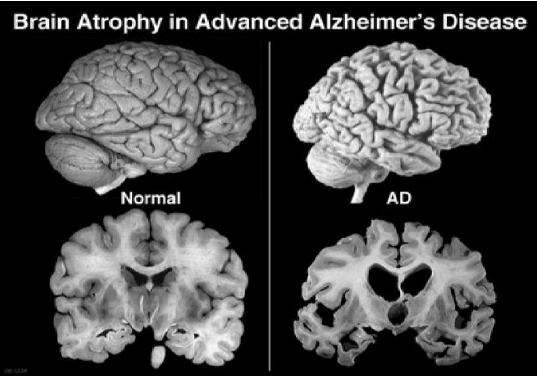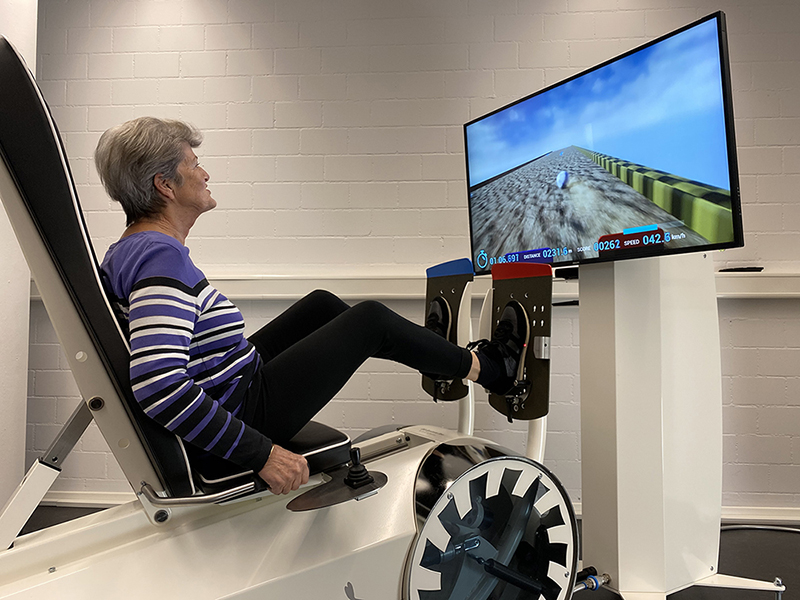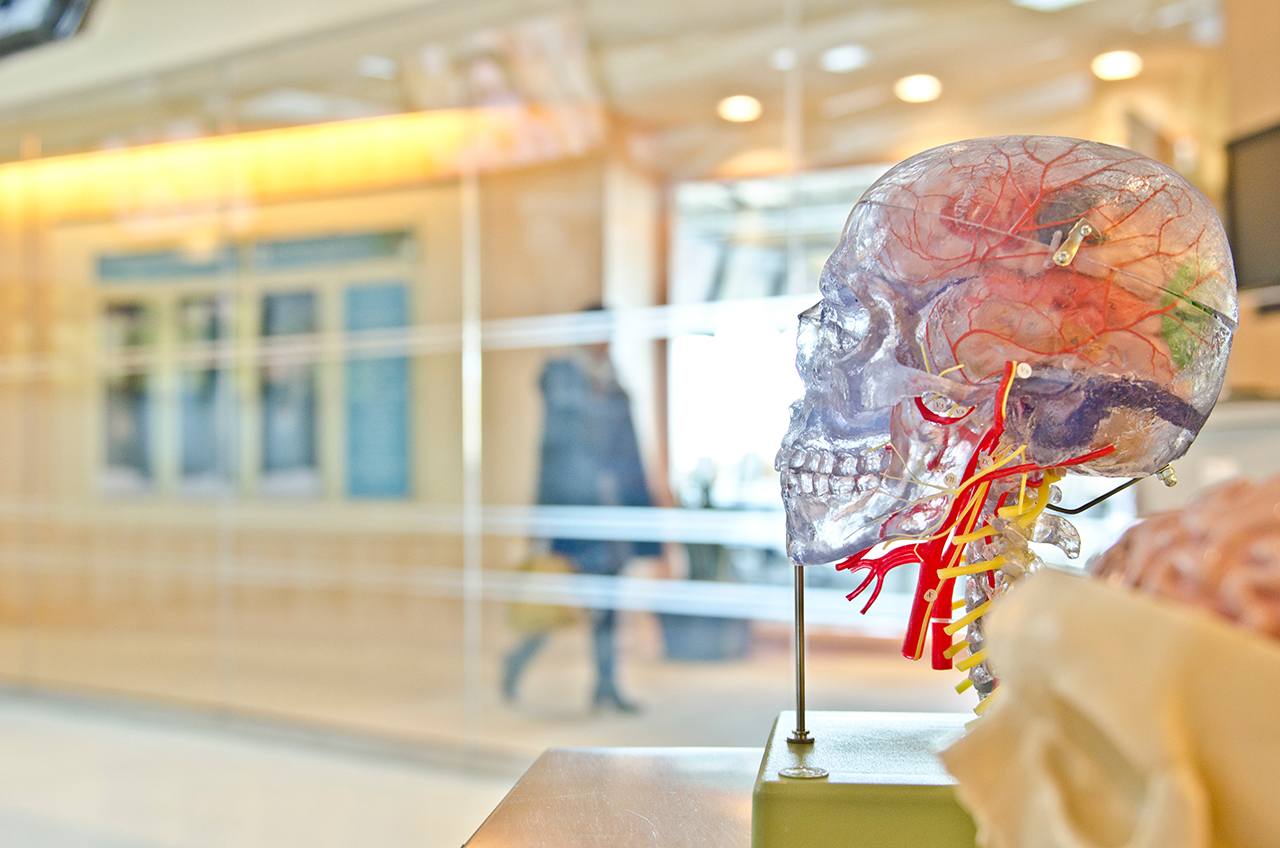Robots can help
With 30-35 million people worldwide suffering from Alzheimer’s disease (1), it might seem that declining brain function is an inevitable part of ageing.
However, this is not the case. “Lots of people live into their 90s and even 100s with no symptoms of dementia,” says Bryan James, an epidemiologist at the Rush Alzheimer’s Disease Center in Chicago, USA. (2)
Dementia is an umbrella term to describe various symptoms of cognitive decline such as memory loss, impaired judgement, confusion, disorientation, and dramatic changes in the ability to carry out the simplest tasks. Alzheimer’s disease, which results from complex brain changes, is the most common cause of irreversible, progressive dementia. It is not only a leading cause of death, but it also comes with a considerable social and economic cost. With the number of dementia patients expected to increase to 131.5 million by 2050 (3), it is more important than ever to keep your mind sharp well into old age.
What are the best ways to do this? Could physical exercise, such as resistance training or high-intensity interval training, benefit your brain by preventing or slowing down cognitive decline?
Is Physical Exercise More Important for Brain Health than Mental Exercise?
Doctors often recommend mental exercises, such as crossword and sudoku puzzles, quizzes and memory games, to prevent dementia and slowing cognitive functions, but did you know that physical exercise seems to be more important? According to Art Kramer, a neuroscientist who directs the Beckman Institute for Advanced Science and Technology at the University of Illinois, physical exercise is “the best thing you can do for your brain.” (2)

Normal vs atrophied human brain Source
Research shows that physical exercise causes changes in the adult brain by increasing the production of brain-derived neurotrophic factor (BDNF), a protein which stimulates the growth and survival of neurons in the brain. It is especially important for people with mild Alzheimer’s disease to produce higher levels of BDNF, because the disease is characterised by a loss of neurons and synapses in the cerebral cortex, and eventually shrinks the brain. Recent studies have shown that physical exercise appears to promote the expression of BDNF and the production of new hippocampal neurons, thus increasing the size of the hippocampus, the area of the brain that controls memory and other executive functions. (4)
According to a study of 7,000 middle-aged and older adults in the UK, people who spent more time doing moderate or vigorous physical exercise had larger hippocampal volumes. (5) Age-related shrinkage of the hippocampus and frontal lobe of the brain usually occurs in people who are between 60 and 70 years old, so it is especially important for older people to exercise and be physical active in their daily lives.
How Resistance Training Helps Brain Fitness
Resistance training is a type of physical activity whose purpose is to make muscles work against resistance with the goals of strengthening the skeletal muscles, building anaerobic endurance and increasing bone density.
There is growing evidence that strong (but not necessarily big) muscles are associated with healthy cognitive function. People with such attributes as stronger handgrips and stronger leg muscles have achieved higher scores in general tests of cognitive ability and tests of executive functions. (6)
However, research shows that muscle mass (sarcopenia) and muscular strength (dynapenia) decline gradually as we age. The decline in muscular strength is usually more severe. To combat this, resistance training and resistance exercises are often recommended for older adults to lessen the effects of ageing on the brain, because these exercises release BDNF.
Can Resistance Training Slow Down or Even Stop Alzheimer’s Disease?
A study by the University of Sydney in Australia demonstrated that a six-month programme of high intensity progressive resistance training can lead to long-term positive changes in the brains of people who displayed mild cognitive impairment and were therefore at high risk of developing Alzheimer’s disease.
The 100 participants were divided into four groups:
- One group took part in a six-month programme of high intensity progressive resistance training consisting of two 45-minute supervised sessions per week
- Another group participated in computer-based brain training exercises
- A third group carried out a combination of resistance training and computer-based brain training
- The control group did neither of these exercise programmes.
One year after finishing these programmes, the participants who had done resistance training showed significantly less shrinkage (1-2%) in areas of the hippocampus responsible for memory and other cognitive skills than the control group (3-4%). Indeed, the brains of those who had trained with weights showed no shrinkage at all in some parts of the hippocampus.
Senior study author Professor Michael Valenzuela was surprised by just how clear the results were, demonstrating that “people doing strength exercises had far better cognitive outcomes than otherwise.” This ground-breaking research suggests that it is possible to use high intensity progressive resistance training to slow down the progression of Alzheimer’s disease or even to stop it from developing. (7)
Another study of mice with cognitive impairment concluded that resistance training had beneficial effects on the brain. In comparison with their sedentary counterparts, mice who took part in a progressive resistance training programme of climbing up a ladder with increasingly heavier weights attached to their tails displayed:
- Better cognitive performance
- Fewer inflammatory changes in the hippocampus and frontal cortex of their brains
- Lower body weight five weeks after the end of the exercise programme
- Increased release of synaptic proteins in the brain (synaptic dysfunction is an early sign of Alzheimer’s disease)
- Reduced deposits of amyloid plaques, which cause the brain to lose neurons and therefore make the development of Alzheimer’s disease more likely. (8)
How Resistance Training Counteracts the Effects of Ageing on the Brain
Several other studies support the growing evidence that resistance exercises and training help to counteract the effects of ageing on the brain.
In 2019, two independent researchers conducted a systematic literature search to analyse the brain changes which may be attributed to resistance exercise. They concluded that resistance training and exercises lead to substantial functional brain changes and improved executive functions, such as reaction time and memory performance. Participants also showed lower levels of white matter atrophy and smaller lesion volumes of white matter in the brain. (6)
The white matter of the brain consists of hundreds of thousands of nerve fibres which connect parts of the brain to each other, and with the rest of the body. This white matter often declines with age, and this may even be associated with the development of dementia. (9) Losing white matter can cause thinking, walking and balance problems.
Another group of researchers tested people younger than 30 to examine their BDNF response to intense bouts of exercise. People in this age group were chosen because cognitive decline can start decades before old age, and the researchers wanted to see whether exercising at a younger age may help prevent brain decline.
They found that hypertrophy resistance exercise (carrying out three sets of ten repetitions with a 1-minute rest between sets) is likely to provide cognitive benefits because significantly more BDNF was produced than when participants did strength training (five sets of five repetitions with a 3-minute rest between sets). (10)
Multi-tasking while Exercising Can Stimulate the Brain More
Cognitively engaged physical exercise, in which people focus on several different cognitive tasks while exercising, appears to increase the brain’s ability to produce BDNF. Cognitively engaged exercise happens when you use the following functions of your brain while exercising:
- Decision-making and planning
- Motor system and control
- Spatial memory and navigation
- Sensory and attention
This may be because our ancestors had to use all these areas of their brains while moving their bodies when hunting for food.
A study carried out at the Centre for Regenerative Therapies Dresden in Germany demonstrated that mice exercising in a cognitively stimulating environment produced more neurons than those who did just physical exercise (although purely physical exercise also increased the size of the hippocampus). (5)
How Can Robotic Personal Trainers Help?
As elaborated above, an increased number of studies have shown that this type of exercise can delay the onset of Alzheimer’s disease by slowing down the shrinkage of certain areas of the brain. This type of exercise may even prevent the disease, especially if people begin exercising regularly at a younger age.
Robotic personal trainers motivate anyone into taking part in a programme of personalised high intensity resistance training. Due to a sophisticated real-time visual feedback mechanism, they also offer a cognitively engaged form of exercise, which requires the use of spatial memory, decision making skills and motor control while exercising. This level of multi-tasking not only makes exercise more enjoyable and fun, but it is also very likely to cause you to produce a higher level of BDNF in comparison to purely physical exercise, thus improving brain function even more over time.

Robotic Personal Trainer in action VIDEO
Whatever your age, it is never too early or too late to take part in an exercise programme that will help prevent cognitive decline. Furthermore, taking part in high intensity interval exercises by following on-screen instructions on a robotic personal trainer will enhance your neuro-motor abilities without causing muscle soreness or injury. It will be easy and it will be fun. These enjoyable exercises can be done in everyday clothes and are an easy way of exercising for anyone who wants to keep their mind sharp well into old age.
Because motivation is everything.
Conclusion
A number of studies show that physical exercise leads to a higher level of the brain-boosting chemical, BDNF. Physical exercise that requires the use of cognitive abilities supercharges the brain’s ability to produce BDNF. High intensity progressive resistance training not only allows you to develop stronger muscles, but it also improves many functions of your brain, thus delaying or perhaps even preventing Alzheimer’s disease. Resistance training can also trigger the release of higher levels of BDNF.
References
1. Dementia, World Health Organization, 2019
2. How exercise and other activities beat back dementia, NPR, 2013
3. How many people have dementia?
4. Exercise-mediated neurogenesis in the hippocampus via BDNF, Frontiers in Neurosciences, 2018
5. Why your brain needs exercise, Scientific American, 2020
9. What is white matter disease? It might be a cause of vascular dementia
10. Intense resistance exercise increases peripheral BDNF, J. Sci. Med. Sport, 2017
Header photo by jesse orrico on Unsplash


